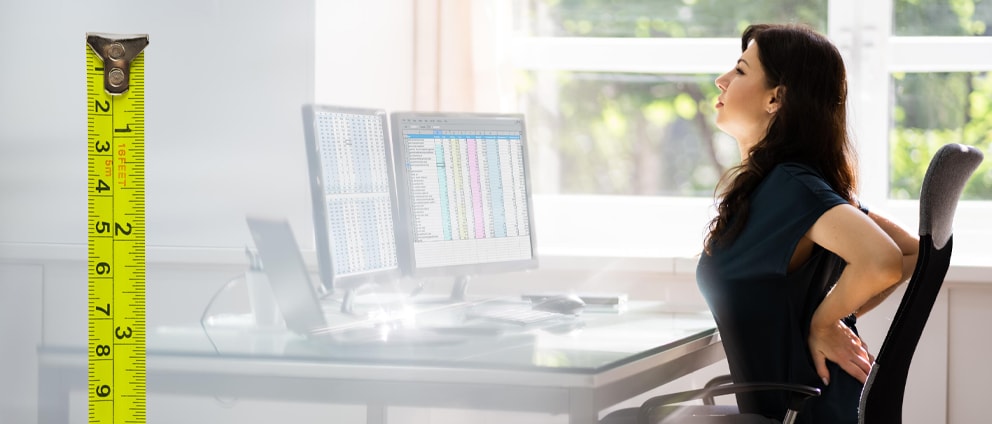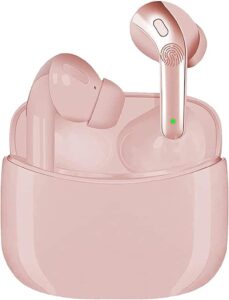To measure a computer monitor, measure the diagonal length of the screen from one corner to another. Computer monitors are measured in inches from corner to corner.
Computer monitors have become an essential component of our daily lives. From office work to playing games, we use computer monitors for every task. However, before buying a new monitor, it’s important to know its size. Measuring a computer monitor is a quick and easy task, but it requires some precision.
The size of a monitor is measured from one corner to another diagonally in inches. It’s crucial to measure the monitor size correctly in order to purchase the appropriate stand or wall mount. In this article, we’ll explore how to measure the size of a computer monitor accurately and easily.


Credit: www.arteil.com.au
Step-By-Step Guide To Measuring Your Computer Monitor
Gathering The Necessary Tools
Before measuring your computer monitor, you will need a few essential tools to make the process easier and accurate.
- A tape measure or ruler
- A notepad and pen to record your measurements
- A friend’s assistance, if necessary
Measuring The Screen Size
The screen size refers to the diagonal measurement of the screen from one corner to another. Here’s how to measure it accurately:
- Find the bottom corner of your computer screen
- Using a tape measure or ruler, measure diagonally across the screen to the opposite corner
- Round the measurement to the nearest whole number
- Record the measurement in inches on your notepad
- This is your screen size
Measuring The Aspect Ratio
The aspect ratio refers to the proportional relationship between the width and height of the computer screen. To measure the aspect ratio, follow these steps:
- Measure the width of the screen (from left to right)
- Measure the height of the screen (from top to bottom)
- Divide the width measurement by the height measurement
- Round the ratio to the nearest number
- Record the ratio on your notepad
Measuring The Screen Resolution
The screen resolution refers to how many pixels are displayed on the screen horizontally and vertically. Follow these steps to measure the screen resolution:
- Open your computer’s display settings
- Select “display resolution”
- On most computers, you will see a number followed by “x” and another number (e.g., 1920×1080)
- This number is the horizontal resolution, and the number after the “x” is the vertical resolution
- Record both numbers on your notepad
With these easy steps, you can measure your computer monitor and have accurate information about its size, aspect ratio, and screen resolution. Keeping this information handy can be useful while shopping for a new monitor or working with graphics and designs.
Types Of Computer Monitors
Overview Of Different Types Of Computer Monitors
Computer monitors come in various types, and choosing the perfect one can be challenging. Here is a brief overview of popular computer monitor types and their features:
- Lcd (liquid crystal display): Features sharp picture quality with accurate colors and high brightness. They are thin and easy to mount on walls.
- Led (light-emitting diode): Among the most popular monitor choices, it provides high-quality graphics, low energy consumption, and is eco-friendly.
- Crt (cathode ray tube): These traditional monitors produce excellent color quality and contrast, but they are bulky, consume a lot of energy, and emit harmful radiation.
- Oled (organic light emitting diode): Offers deep blacks, vibrant colors, and a wide viewing angle, making it an ideal choice for gamers and graphic designers.
Differences In Screen Sizes And Resolutions
One of the most crucial factors to consider when purchasing a monitor is the screen size and resolution. Understanding these factors can significantly impact your user experience. Here is what you need to know:
- Screen size: Measured diagonally, the screen size can range from 19-inches to more than 60-inches. A larger screen allows for a better viewing experience, but it also means that you will need more desk space to accommodate it.
- Resolution: This refers to the number of pixels on a screen. The more pixels a monitor has, the sharper and detailed the image will be. The two most common resolutions are full hd (1920×1080) and 4k ultra hd (3840×2160).
Advantages And Disadvantages Of Each Type
Each type of monitor has its unique features, advantages, and drawbacks. Here are some pros and cons of each popular type:
- Lcd: Provides high-quality picture and brightness with low energy consumption and easy mounting on walls. However, the viewing angle is relatively narrow, and the black color sometimes looks less sharp.
- Led: Comes with energy-saving features, high color accuracy, and durability. However, it can be expensive, and the more backlight it uses, the less energy-efficient it becomes.
- Crt: Provides sharp color accuracy and high contrast ratio, but it’s heavy, bulky, and not environmentally friendly. Additionally, they emit harmful radiation and require degaussing regularly.
- Oled: Comes with deep blacks and vibrant colors with a faster refresh rate, making it an excellent choice for gamers and graphic designers. However, oled monitors can suffer from image retention or burn-in issues and sometimes lack brightness.
Understanding the types of computer monitors available in the market, their differences, and advantages and drawbacks can significantly impact your user experience. By carefully considering these factors and assessing your needs, you can make an informed decision and find the perfect monitor that meets your requirements.
Benefits Of Knowing Your Computer Monitor Measurements
Explanation Of How Knowing Your Computer Monitor Measurements Can Benefit You
Are you experiencing issues with how your computer monitor is displaying images? Do you want to know how to enhance your viewing experience? Then measuring your computer monitor is the first step.
Knowing your computer monitor measurements can benefit you in multiple ways. Here are some of the benefits:
Improved Compatibility With Accessories And Software
If you know the size of your computer monitor, you can easily select compatible accessories and software. Here are some examples:
- Vesa mounts: Measuring the monitor’s vesa pattern helps you choose the right mount for your device.
- Monitor filter: Understanding the diagonal screen size of your monitor can help you find a compatible filter that will reduce glare and blue light exposure.
- Gaming peripherals: Knowing your monitor’s aspect ratio, resolution, and refresh rate will help you find gaming peripherals that match your setup.
Enhancing Your Viewing Experience
Measuring your monitor can help you optimize your viewing experience in various ways. Here’s how:
- Adjusting viewing distance: By knowing the diagonal size of your monitor, you can determine the perfect viewing distance for the best image quality.
- Image scaling: Understanding the resolution of your monitor can help you adjust image scaling to avoid distorted images.
- Multitasking: Knowing your monitor size and resolution can help you divide your screen into multiple workspaces and increase productivity.
Measuring your computer monitor is easy and brings multiple benefits. It can reduce compatibility issues, help you optimize your viewing experience and increase productivity.
Frequently Asked Questions Of How To Measure Computer Monitor
How Do I Measure My Computer Monitor?
To measure your computer monitor, use a tape measure to measure the distance between the top left and bottom right corners.
What Is The Size Of My Computer Monitor?
The size of your computer monitor is measured diagonally from corner to corner.
How Do I Find The Resolution Of My Monitor?
To find the resolution of your monitor, go to the display settings on your computer and look for the “resolution” section.
Conclusion
After reading this article, you should be well-equipped to measure your computer monitor like a pro. Knowing the correct size of your monitor is crucial if you want to get the best visual experience while working, gaming, or streaming. Don’t forget to take note of the different measurement units used and be extra careful when measuring to avoid any errors.
If you’re unsure about the right size or resolution for your needs, it’s always better to ask for expert advice. Keep in mind that a well-measured monitor can help prevent eye strain and other related health issues, so it’s worth taking the time to get it right.
So go ahead, grab your measuring tape, and make sure you’re enjoying your computer screen to the fullest.



